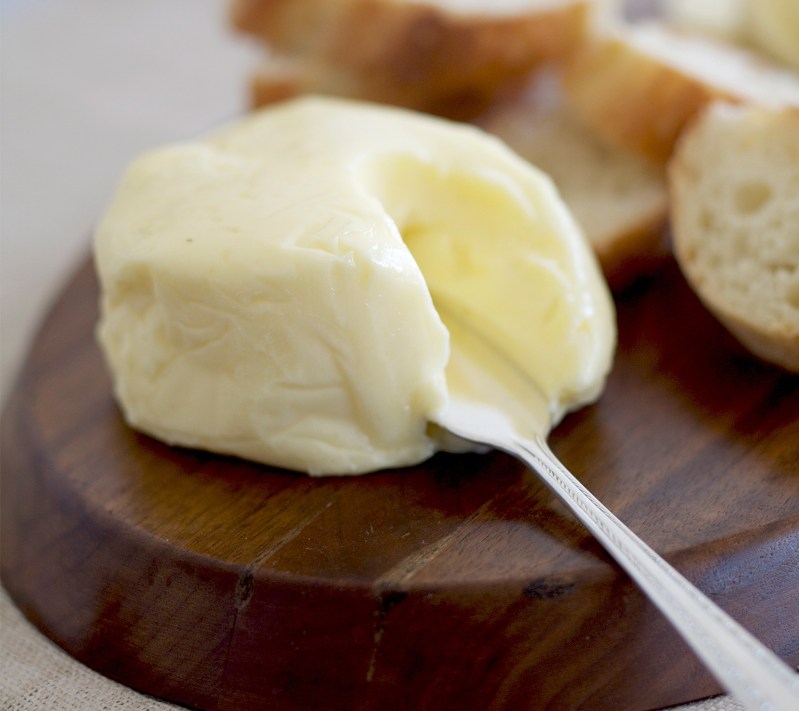
While savoring one of man’s greatest creations, one might wonder, what makes some butter so much better than others? It seems like a fairly simple product, but the complex culturing process can make the difference between a butter that’s more “eh” and one that’s more, let’s say, bread-worthy.
To get an in-depth look at the spread of spreads, we spoke with Andrew Schmitt, head of Research and Development at Vermont Butter and Cheese. Here, Schmitt and his team get a high, 86% butterfat cream from St. Albans Coop in Vermont. According to Schmitt, the higher percentage of butterfat, the better the butter. Most commercially made butters have closer to 80% butterfat, considerably lower than Schmitt’s.
It’s also critical that the cream go straight from St. Albans’ cows to his creamery, where the butter is pasteurized, cultured overnight, and slow-churned the next day. After churning, other ingredients, such as Celtic sea salt and maple syrup, can be added.
Vermont Butter and Cheese has been highly lauded for having some of the tastiest butter in the United States. The reason for this may lie in their culturing process. As the cream sits overnight, the lactic bacteria have time to ripen, allowing a dense crème fraiche to develop. “It takes a night to culture it, which is an expensive process that not a lot of people do,” Schmitt tells us. “We do it the old fashioned way. It costs a lot more money, but it creates a much more high quality butter.”
Because of their European-style culturing process, the product is a rich, nutty butter that has a higher smoke point – melting immediately when it hits the tongue (a quality that most people love, but don’t necessarily know that they love).
We asked Schmitt for a favorite thing to eat with butter. His response was simply and perfectly, “bread.” To taste the butter from Vermont Butter and Cheese, visit your local Whole Foods Market. If you can’t get to a Whole Foods, go with a butter that has a higher percentage of butterfat, even better if it has been cultured European-style.


